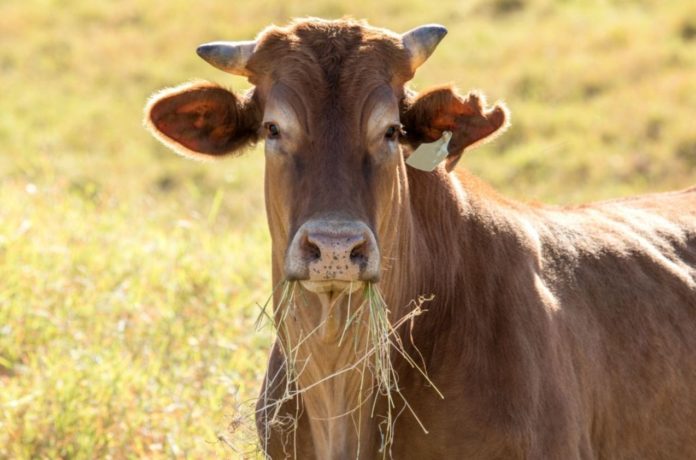Microbes extracted from cow stomachs can engulf certain types of plastic, including polyethylene terephthalate (PET) used in soda bottles, food packaging, and synthetic fabrics.
Scientists discovered these microbes in the stomachs of cows, where these microorganisms help break down their diet of thick vegetation. They do this by digesting or fermenting the food consumed by a cow or other ruminant.
They chose to get into cows’ stomachs because they suspected that some of the microbes they contain must be capable of digesting polyesters, substances whose component molecules are linked by so-called ester groups.
- Scientists in Fear of This New Predator From Red Sea Eating Native Species in Mediterranean
- Does This Mean We Stopped Being Animal and Started Being Human Due to ‘Copy Paste’ Errors?
- The One Lifestyle Choice That Could Reduce Your Heart Disease Risk By More Than 22%
- Aging: This Is What Happens Inside Your Body Right After Exercise
- Immune-Boosting Drink that Mimics Fasting to Reduce Fat – Scientists ‘Were Surprised’ By New Findings
This is because, due to their herbivorous diet, cows consume a natural polyester produced by plants called cutin, explained study author Doris Ribitsch, a scientist at the University of Natural Resources and Life Sciences in Vienna.
Being a synthetic polyester, PET shares a similar chemical structure to this natural substance.
“When fungi or bacteria want to penetrate fruits, they produce enzymes capable of cleaving cutin,” that is, of dividing the chemical bonds of the substance, Ribitsch explained to Live Science.
Specifically, a class of enzymes called cutinases can hydrolyze cutin, that is, start a chemical reaction in which water molecules break down the substance.
Ribitsch and his colleagues had already isolated these types of enzymes from microbes and realized that cows could be a source of similar polyester-eating critters.
“These animals consume and degrade a lot of plant material, so it is very likely that these microbes can be found” living in the stomachs of cows.
In fact, in their new study, published July 2 in the journal Frontiers in Bioengineering and Biotechnology, the researchers found that these microbes could degrade not only PET, but two other plastics as well: polybutylene adipate terephthalate (PBAT), used in compostable plastic bags, and polyethylene furanoate (PEF), made with renewable materials of plant origin.
To assess the plastic-eating ability of these microbes from cow stomachs, the team incubated each type of plastic in cow rumen fluid for one to three days. Thus they were able to measure the by-products released by plastics, to determine whether and to what extent the bugs degraded the materials into their components.
While rumen fluid was more efficient at breaking down PEF, the other types of plastic tested were also degraded, the team of researchers reported.
The team then analyzed the DNA samples from this liquid to determine exactly which microbes were responsible for the breakdown of the plastic.
It turned out that the vast majority of them were Pseudomonas bacteria.
In fact, this ability has already been reported in the past in several of its subspecies.
Large amounts of bacteria of the genus Acinetobacter were also detected, and in their case, it was also shown that some of the species of this genus break down synthetic polyesters.
Going forward, Ribitsch and his team want to fully characterize the plastic-eating bacteria in rumen fluid and determine what specific enzymes the bacteria use to break down plastics.
These enzymes could be useful for recycling and it would be possible to genetically engineer microbes that produce these enzymes in large quantities so as not to resort to the stomachs of cows to obtain them.
Other plastic-eating beings
The first bacteria capable of consuming PET to be discovered was Ideonella sakaiensis, a species involved in the fermentation of sake, explains David Levin, a molecular biologist at the University of Manitoba. Some marine organisms secrete cutinases that can break down plastic, as do various fungi that infect land plants, he noted.
Until now, scientists have been lucky in finding plastic-eating enzymes that break down PET and biodegradable plastics like PBAT and PEF, but now the real challenge is finding enzymes that break down more problematic plastic products, he Levin.
For example, plastics like polyethylene and polypropylene are largely made up of strong bonds between carbon atoms, and this structure limits the ability of enzymes to grasp molecules and start hydrolysis, Ribitsch said.
So while scientists have already discovered, characterized and commercialized enzymes to degrade PET, researchers are still hunting for microbes that can manipulate polyethylene and polypropylene, according to Levin.
- Scientists in Fear of This New Predator From Red Sea Eating Native Species in Mediterranean
- Does This Mean We Stopped Being Animal and Started Being Human Due to ‘Copy Paste’ Errors?
- The One Lifestyle Choice That Could Reduce Your Heart Disease Risk By More Than 22%
- Aging: This Is What Happens Inside Your Body Right After Exercise
- Immune-Boosting Drink that Mimics Fasting to Reduce Fat – Scientists ‘Were Surprised’ By New Findings
Levin and his lab have identified some promising candidates on this front, but are still figuring out how to maximize the power of plastic-eating bugs. Ribitsch said his team is also on the lookout for microbes that can consume polyethylene and wonders if the bugs could be in the cows’ stomachs.
Image Credit: Getty
